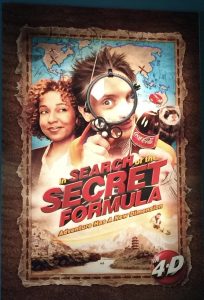Before coming to law school, I knew close to nothing about Intellectual Property (IP). But, I quickly realized that IP law can be interesting. In my previous post, I explained how I became interested in IP. In this post, I will share some fun facts that I have learned about IP in the past year.
IP rights work like other property rights!
Similar to real property (i.e. land) rights, IP rights give rights to the holder. There are different rights related to different types of IP.
For example, patents provide their owner with the right to exclude others from making, using, or selling an invention. Trademarks allow the holder of a valid trademark to sue others for infringement or dilution, if someone is using a mark in goods or services in commerce that is similar to a valid mark and is likely to cause consumer confusion. Copyrights allow their holders to prevent others from a variety of actions including copying or even making derivative works that are based on (i.e. such as a movie based on a book) the copyrighted material.
Basically, your IP right is the right to prevent others from doing something.
You can trademark a scent!
I was quite surprised when I learned in my IP survey class that you can actually trademark a smell/scent. I have always thought of scents as intangible and hard to distinguish. Therefore, it was hard for me to conceptualize how you could trademark a scent.
If consumers associate a scent with a certain product/brand, that scent can be a trademark. Why? Because a trademark is anything associated with a good (or service) that serves to identify it. This can be a word or an image like the Netflix logo. Not every scent is associated with a company. But, when it is, it has secondary meaning. This means that it operates as a trademark. Playdoh has a trademark in the scent of the product. It is the distinctive smell of Playdoh that people naturally associate with the brand which allowed for the scent to be trademarked.
You can obtain trade dress protection over a color!
Trade dress is a type of trademark which focuses on the feel or look of a good or service. This often applies to the package of a product.
Another fact about IP which I found extremely fun is the opportunity to obtain trade dress protection of a color. At first, I thought that it was not possible or fair. After all, how can you ban others from using a certain color on their products?!
However, I learned that the luxury jewelry company Tiffany has a trademark in the Tiffany blue color. No other jeweler can use that same shade of blue for their box packaging without facing a potential infringement suit by Tiffany. Another protected color is Louboutin Red soles for high heeled shoes.
While it may seem unfair at first, the USPTO only allows the trademark protection of a color to be limited to a specific type of good or service. This allowed me to understand why trademarks for colors are fair and make sense.
Patents can help you stop something from being imported – sometimes!
Generally, someone cannot import a patented item into the country because that would violate the patent owner’s rights, which include the right to prevent others from importing an infringing product. However, there is a doctrine called international exhaustion which is recognized by many countries. The doctrine prevents the owner of a patent, who has made its first global sale, to bar others from importing the product into the country. The idea behind the doctrine is that the owner exhausted his rights when he made that first global sale. The ability to bar importation depends on whether the importing country recognizes international exhaustion.
You cannot copyright an idea!
The requirements to obtain a copyright are having an original work of authorship (original to a person in that it is not copied) which has minimum creativity (more than alphabetizing names in White Pages) and is fixed (permanent enough to be perceived). There are multiple categories of works that can be copyrighted, such as literary works (i.e. books) and audiovisual works (i.e. movies).
But, ideas, facts, and methods/processes are not protectable by copyrights. That’s explicitly barred by law. It makes sense because ideas would not seem to have minimum creativity, Also, if ideas were protected, that would make it hard for others to use them or develop new creations. Also, barring facts from copyright makes sense since they are not “original” to one person.
This lets multiple people write about the same event without violating copyright. Also, since copyright is about protecting expression and not the act of doing something, it makes sense not to protect methods/processes. Methods and processes can also be covered under patents (if the patent elements are met). They can also be protected as a trade secret if the information commercially valuable and kept a secret. Like the formula for Coca-Cola!

An employer owns the copyright for works created by employees!
A work made for hire is a work that an employee completes during the course of their employment. Additionally, it can be a commissioned work that falls into specific categories and both the commissioner of the work and the creator agree that it will be a work made for hire.
Any work made for hire actually grants the copyright to the employer rather than the creator of the work. For example, if a photographer for a magazine takes pictures of a parade within the scope of his employment, the copyright over those photographs belongs to the magazine.
And more?
These are some of the facts that I learned in my IP class which I found fascinating. I hope you do too. And I also look forward to learning more.

Doris Cikopana
Associate Blogger
Loyola University Chicago School of Law, J.D. 2023
